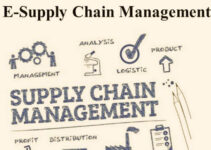H&M (Hennes & Mauritz AB) is a Sweden fast-fashion and retail clothing multinational company. Erling Persson founded the fashion and retail clothing brand in 1947. Today, we’ll discuss the value chain analysis of H&M; the primary and supporting activities involved in the process of value chain analysis company example; inbound and outbound logistics, operations, marketing and sales, services; infrastructure, HRM, technology, and procurement.
Substitutes of H&M
- Macy’s
- Fast Retailing
- Boohoo
- PVH
- UNIQLO
- Abercrombie & Fitch
- Zara
- Arcadia
The value chain analysis of H&M would analyze the primary and supporting activities as application of the value chain analysis process; inbound outbound logistics, operations, marketing, customer service; infrastructure, technology, HRM, and procurement. Here’s the H&M value chain analysis company example as follows;
Value Chain Analysis of H&M
Let’s discuss the primary and supporting activities involved in the process of value chain analysis of H&M. It is an application of value chain analysis based on Porter’s model; some of the key elements and components of value chain analysis are as follows;
Primary Activities of H&M
Some of the key elements and components involved in the primary activities of the H&M value chain analysis process are as follows;
Inbound Logistics of H&M
The inbound logistics outlines the inflow of products and goods into the company. The clothing brand deals with hundreds of suppliers in various countries across the world. However, they ensure the smooth supply of products and goods to the company’s H&M retail stores.
I-Material Sourcing
H&M clothing brand is highly cautious about material sourcing. The company makes sure that the material sourcing is sustainable; economically, environmentally, and socially. However, the retail clothing brand recognizes the material sourcing sustainability issues in three stages.
- Recognizing – reviewing and analyzing relevant to the interests and external standards
- Prioritizing – scoring and prioritizing based on their social, economic, and environmental impact and getting input from internal and external stakeholders
- Reviewing & Analysis – analyze their material matrix regularly with their key stakeholders; while maintaining their focus on sustainability
II-Outsourcing Suppliers
H&M outsources almost all of its clothes production and manufacturing works and operations. According to an estimate, the company deals with over 605 suppliers and they manufacture products for the brand in over 1200 factories in Europe, Asia, and Africa. Some of the key statistical facts and figures about H&M supplier productions are as follows;
- EU deals with the largest production of beauty products for the H&M Group
- Bangladesh and China manage the largest production of commercial clothing for the brand
- Suppliers’ factories have employed approximately 1.3 million people to manage global operations
- Out of which, 67% of the employees and workers are female; it shows the company’s commitment to women’s empowerment and gender equality
Outbound Logistics of H&M
The outbound logistics focuses on the outward flow and movement of products and goods of the clothing brand H&M; from the production and manufacturing units to the retail stores of the company.
I-Transportation
H&M employs various transportation and distribution channels and mediums to deliver finished goods from the production and manufacturing units to the warehouses. The company’s warehouses make sure to store the inventory in the right conditions; they deliver the on-demand products and goods to the required retail destination and store when needed. However, the company employs transportation mediums like railways, ships, and roads for speedily and quickly delivering the finished goods.
II-Distributions Centers
H&M has established various distribution centers in different countries and geographical regions across the world. They have the obligation of managing stock, importing products and goods, and distributing it to the company’s retail stores. For instance, if H&M is expanding its business into the new country; the brand won’t build a new distribution center there; rather it would employ the nearest distribution center to launch its operations.
Operations of H&M
I-Production & Manufacturing
As we have mentioned earlier, H&M outsources almost over 99% of its production and manufacturing works from Asian, African, and European countries. The outsourcing partners of the company manufacture products either in-house or they get it done from other factories. However, some of the main functions they perform or their subcontracted suppliers perform are as follows;
- Processing factories
- Printmaking
- Embroidery
- Cut and sew and others
II-Sustainability Practices
H&M the clothing brand makes sure that they are engaging in sustainable practices; not employing child or slave labor. In fact, the company has established SIPP (sustainability impact partnership program) and it analyzes the sustainability performance of the company’s suppliers and outsourcing partnered factories.
Marketing & Sales of H&M
I-Fast Fashion Model
H&M follows the fast fashion strategic approach and it focuses on efficient supply chain and speedy production cycles. It helps the company to develop new clothing and fashion designs while maintaining the affordable cost factor. However, the fast-fashion approach helps the company to offer always something new and appealing to the customers; whenever they visit the company’s stores.
It allows the clothing brand H&M to quickly respond to the changing customer market trends. It helps the company to keep and maintain its product portfolio fresh and updated and promotes repetitive visits of customers.
II-Loyalty Programs
In order to attract the attention of new customers and retain the existing ones, H&M offers various types of loyalty programs. For instance, repetitive customers earn point points every time they shop from the company, and it leads them to earn discounts from their next shopping.
Customer Service of H&M
I-After Sale Service
H&M offers after-sale service to the customers in order to amplify the customer satisfaction level and make them repeat shoppers. For instance, the clothing brand allows its customers to return their online shopped products and goods to the company through the reverse logistics process of H&M. The chat box customer service is always open to answer the queries of customers. Online shoppers could track their orders and find out the exact location of their package.
Supportive Activities of H&M
Some of the key elements and components involved in the supporting activities of the H&M value chain analysis process are as follows;
Infrastructure of H&M
H&M has established a well-organized corporate structure and infrastructure to manage its global operations. The CEO of the company has the operational responsibility for the brand. The company has established various brands under its portfolio and they have got their own styles and stores in various regions. Some of them are as follows;
- Other Stories
- Monki
- ARKET
- Weekday
- COS
- Sellpy
- AFOUND
HRM of H&M
H&M has established a very large database of employees comprising over 106,522 employees to manage its global operations. Along with in-house employees, the company’s supplier’s factories have employed over 1.3 employees and workers producing goods for the clothing brand. The company offers various benefits, rewards, and training programs for its employees to retain the talent working for the company in the long term.
Technological Development of H&M
H&M employs the latest technology like AI, 3D printing, and other tools and equipment in the development of the latest designs and sustainable fashion for the company. For instance, the personal innovation labs and personal avatars allow customers to try and design their clothes in virtual fitting. The virtual fitting offers a completely new dimension to the customer experience. It helps the company to decrease the customer return rate of clothes.
Procurement of H&M
H&M focuses on engaging in the ethical sourcing and purchasing of the material and raw supplies. In fact, the company makes sure that its partners and suppliers are following ethical practices while procuring. The right procuring practices ensure the right treatment of clothing workers and the development healthy working environment.
Conclusion: H&M Value Chain Analysis Company Example |Application of Value Chain Analysis Process
After an in-depth study of the value chain analysis of H&M; we have realized that H&M is the world’s leading retail fashion clothing brand. If you are learning about the H&M value chain analysis company example; then you should keep in mind the above mentioned primary and supporting activities involved in the process of value chain analysis. They comprise inbound and outbound logistics, marketing, operations, customer service; infrastructure, technology, HRM, and procurement as an application of value chain analysis.
Ahsan is an accomplished researcher and has a deep insight in worldly life affairs. He goes Live 3 days a week on various social media platforms. Other than research writing, he’s a very interesting person.


